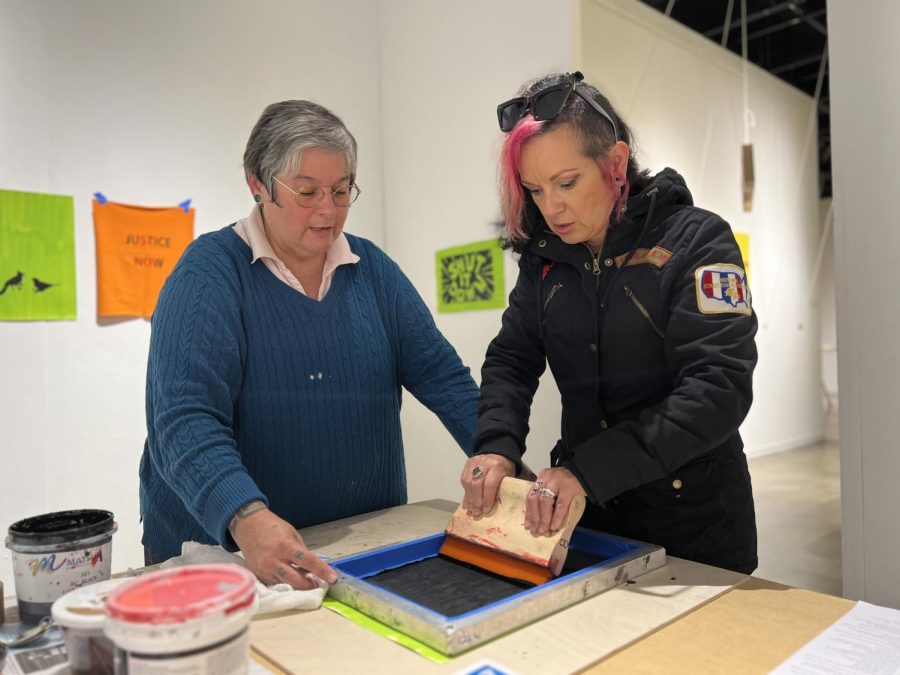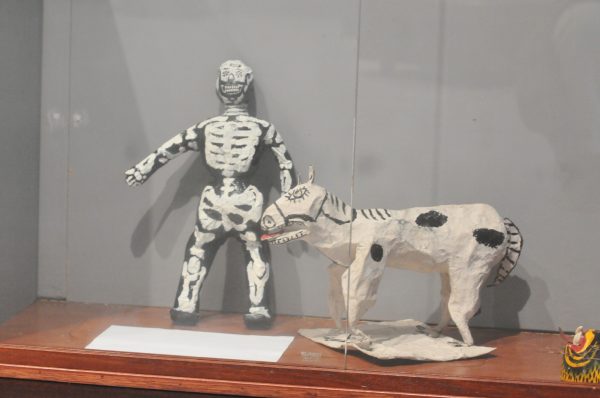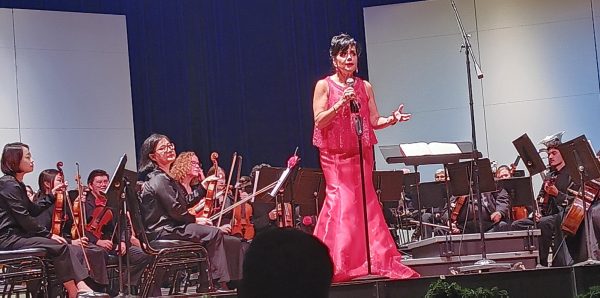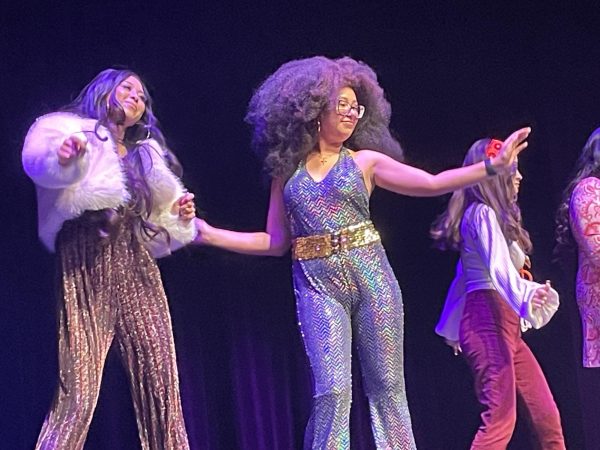Environmental justice art exhibit showcases change through collaboration
Edith Abeyta (left) and Meg Aguilar (right) making an environmental justice poster during the screen printing workshop at El Camino College Art Gallery on Saturday, Dec.3. (Nindiya A Maheswari Putri | The Union)
Greeted by a city map mural displaying air pollution levels in the South Bay, students participated in creating art pieces to promote social changes at the different stations showcased at the Environmental Justice Art Exhibit.
“Edith Abeyta: Below Our Feet and Above Our Heads: Fenceline Resistance From Pennsylvania to California” at the El Camino College Art Gallery hosted its campus reception on Nov. 30 and hosted a public reception on Saturday, Dec. 3.
El Camino College President Brenda Thames and Trustees Kenneth Brown and Nilo Michelin attended the public reception and engaged in community discussions with students and guests.
Thames said she enjoyed meeting Abeyta and loved the work and the exhibition.
“She mixes the practice of art with actually engaging people who are at the exhibit so you actually can learn,” Thames said. “I love that aspect of it.”
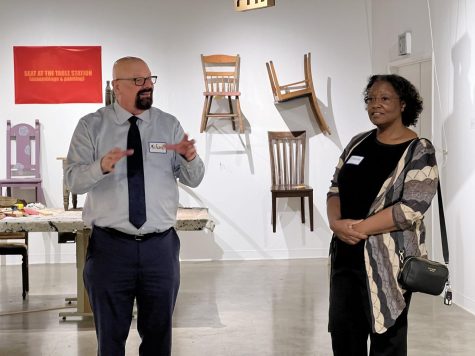
Arts Gallery Director and Curator Michael Miller was familiar with Abeyta’s work on environmental justice in Pennsylvania and felt that the South Bay was facing similar issues with air pollution.
Miller invited Abeyta to El Camino and believed she could engage with anyone on campus and bring communities together.
Abeyta creates works about environmental justice issues but adds the element of collaboration with every piece. She is a localized artist that is used to more outdoor showcases and having the community participate.
The exhibit opened on Nov. 21 with multiple interactive stations for guests to come and participate. Art that involves the participation of the community is something Abeyta strives for because it provides opportunities and materials to be accessible for anyone to create art.
“Art has the ability to connect people together and build relationships,” Abeyta said.
Abeyta said that the connection is made possible when people are provided with an outlet to share their stories that create relatability or invoke thoughts and change.
When creating artworks and stations, Abeyta uses mostly localized resources, including cardboard pieces, chairs and anything that is salvageable that has been previously thrown away or abandoned on the road.
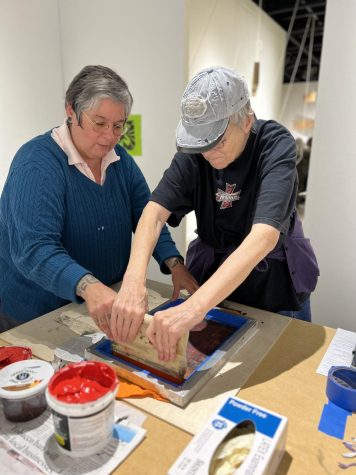
The interactive stations at the gallery included “Textile,” “Seat at the Table,” “Piñata” and the “Social Justice Poster Studio” station.
Inspired by the idea of joyful resistance, Abeyta created the “Piñata” station that enables guests to make their own piñata from recycled cardboard boxes and add colorful tissue paper.
At the “Social Justice Poster Studio,” Abeyta teaches guests how to do screen prints using newspapers, screens, and paint. The guests are able to make posters or t-shirts with the technique Abeyta demonstrated at the station.
“What’s great about [screen print] is that you don’t have to get the screen burn so you don’t need that photo motion,” Abeyta said. “You can print on the spot, in your studio, on the streets, at a family picnic, whatever you want to do.”
The passion that pushes Abeyta to continue making these art exhibits is how art inspires people and opens their eyes to a subject they may have not considered before.
As part of the exhibit, Abeyta hosted a master class focusing on collaboration and invited guests to sit together to define what collaboration means to them.

Afterward, there was a discussion about possible issues on campus, such as food equity and affordability. The guests were allowed to use the workshop tools and materials to make posters or printed objects to carry out their ideas.
Community member Ana Chavez joined the discussion and visited the Social Justice Poster Studio station.
“I enjoyed sitting around problem-solving with a community group and then I really had fun doing the print screen,” Chavez said.
Annette Owens, an adjunct industry & tech instructor, participated in the master class and found the concept of environmental justice relatable and timely as her family in Houston was dealing with air and water pollution
“[Edith’s messaged] just really clicked for me,” Owens said. “[it is] about the environment being poisonous; water, air, and now with the kids food not as great as you want it to be…it really struck me that all of that was converging on one day.”
The exhibit is free for the public and will be open for one last day on Dec. 15.



